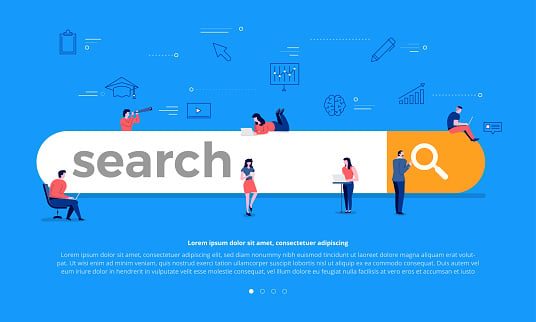
Google’s Next Update Scheduled For May 2021: Are You Ready?
If You’re Not Prepared, You Could See A Big Dip In Visitors From Search
It’s springtime, and while the birds are chirping and the weather’s getting nicer, Google is ready to throw a curveball and change their algorithm for the search engine yet again.
It’s not new news – they’ve been talking about this and publishing the date for the past year or so. But many marketers will be caught off guard and then need to scramble to catch up and make changes to their website and website pages.
Some of these new changes are best practices that you should have been working on all along, like mobile-friendly pages. Let’s get into the details and see how hard it’s going to be to maintain your rankings, or even better, grow your rankings for the rest of 2021.
Here’s a high-level overview of the coming changes.
Google plans to update the algorithm to include a factor they’re calling page experience. This includes Google Search signals such as mobile-friendliness, safe-browsing, HTTPS and intrusive interstitial guidelines. It also includes the metrics in Google’s web vitals, which have to do with site load times, interactivity and visual stability.
For site owners and marketers, understanding these signals and making any changes should be your top priority over the next few weeks.
Some of these steps include optimizing for mobile, improving page load times, having appropriate placement of your CTAs and using alt text for your images. If you’ve been following along and practicing good website hygiene anyway, most of these issues should be minor and not affect your rankings at all.
Here’s a deeper dive into the changes and what you should be doing about them if you’re not already following the Google playbook for websites.
If you think about it, this all makes sense. Google wants to serve up pages that offer the best experiences and the best content. Despite the changes coming, Google is still all-in on content. They even posted in their own blog, “Great page experiences don’t override great page content."
But if the page is clunky in its delivery, they don’t want to serve it up in search results.
What should you be doing about these coming changes? Let’s go through them one by one. Again, some of these should be easy to check off as already doing or in process.
Understanding The Google Metrics
Data is great, but you have to know what to do with the data after you review it. It has to inform your action plan. Understanding the metrics Google uses will give you context for evaluating your own website performance data.
As it relates to this update, Google is using:
- LCP (Largest Contentful Paint), which is fancy language for how long it takes the page to load
- FID (First Input Delay), which is interactivity or how long before someone clicks on a link on the page
- CLS (Cumulative Layout Shift), which is visual stability or how easy it is to get through the page
If you want to learn more about these metrics, Google provides its own resource to help people get tuned into them. There’s no need to guess about how your site nets out. Use the link to get a score on your site as it relates to many of these factors, like security, mobile friendliness and page load speeds. Use this online mobile friendly test and this for insights on your page speeds.
After you know where your website and website pages stand, you can get started looking at ways to improve your site’s performance.
Optimize For Mobile Search
This won’t surprise anyone, but I like supporting upgrades with data anyway. Mobile device traffic has consistently hovered around the 50% mark since the beginning of 2017. People often do initial searches on their devices and then return to high-quality, fast-loading mobile sites on their laptops for follow-up.
Many of the hosting platforms help you redesign the mobile experience. If you haven’t already, you should get your pages mobile-ready by reducing code, leveraging browser caching and reducing redirects.
Webpage design should be simple and responsive so that it looks great on smaller screens. In many cases, we actually do different designs for devices to ensure the user experience is taken into consideration. Video, images, CTA buttons and other items often need to be redesigned to deliver an optimized mobile experience.
Improve Page Load Speeds
Your visitors are highly impatient when it comes to slow-loading pages, and Google knows this. Recent research from Unbounce confirms what Google knows – a delay of just one full second in loading can decrease conversion rates by 70%. Ouch!
Google publicly reports that their best practice for page load speed is three seconds. There are several ways to ensure your pages load quickly.
One way is to minimize HTTP requests. These are the calls from your website to other services, hosts or websites. The more requests, the slower the page. If the requests are not requested correctly, the responses can slow down the page.
Another way to fix this is to combine files to overcome it. You can also look more closely at all the requests and eliminate any redundant requests or requests that might not be needed.
You also have different options for improving load time for your website. One option is to use
asynchronous loading, means that some scripts will load simultaneously. When a browser loads a web page, it moves from top to bottom. When it gets to a synchronous script file, it stops loading the other scripts until it has finished with that particular script. If your scripts can run at the same time, your page loads faster.
Another aspect is the JavaScript loading on your site and the server response times. With JavaScript, small programs running inside the site to provide advanced functionality. You could have old scripts that need to be retired or upgraded, and these are worth looking at across your site.
Last but not least, images are some of the biggest offenders when it comes to site load times. Don’t forget to check on compression, caching and image size. So many websites are visually heavy these days. If the images aren’t used properly, they can dramatically slow down your site and hurt your chances to rank.
Use Of CTAs
If conversion rate and the site’s FID are important in this new update, then how you convert visitors on all your pages is going to be critical going forward. This generally means how you use CTAs (calls-to-action).
There are all kinds of CTAs on your site. We recently published some new optimization hacks to help drive leads and conversions. To summarize, you have links, buttons and designed CTA blocks. Their purpose is to communicate value, drive clicks and send visitors to a special landing page where they’ll convert from an anonymous visitor into a new lead.
You’ll want to make sure you place these on the right pages. Filling a page with CTAs in the hope that more is better than less won’t work. But strategically designing your site and your site pages based on the buyer journey and then placing the right CTAs on the right pages will improve your conversion rates and your rankings on Google.
Make sure your CTAs stand out on the page. Clearly explain what you expect your visitors to do and the value they’ll get from clicking. CTAs should be part of your ongoing optimization work, which we talked about in Tuesday’s blog article, 6 Critically Important Lead Generation Optimization Tasks Your Marketing Team Should Be Working On Every Week.
Alt Text For All Images
As we mentioned, the images on your website are a big part of design and your story. They help carry your message as well. Images need to be optimized to keep page load speed low, but you also need to make sure your images are properly tagged so they are easy for Google to search.
Every time we put an image on a website page, or even a blog article, all images get alt tags or alt text. These are the words that describe the images on the page.
These tags will be displayed in case the image file isn’t loading, so users understand the context of the image on that page. Search engine crawlers also use these descriptions for indexing, and this helps rankings.
One of our best practices is to make sure we use the keywords, keyword phrases or long-tail keywords as tags on those images on the pages designed to rank for those keywords or phrases.
It sounds like a small step, but you would be surprised how many websites we see without alt text or alt tags on the images.
Continued Focus On The Content
Finally, Google remains clear on the relationship between the technical architecture of your website and its words, images and intent. Don’t stop creating websites for people. This means you need to continue to focus on creating high-quality, educational content.
This also means you’ll need to connect content with the visitor experience and keep in mind load times, conversions and the way your website works technically.
In short, we balance the cool features, fancy interactions, videos and content with the need for the site to load quickly and deliver an amazing experience. This balance is going to be increasingly more important when the May 2021 algorithm upgrade gets launched.
While most of the upgrades are work you should have probably been doing all along, do take action now to review your site and make sure you’re prepared for the upcoming update.

CEO and Chief Revenue Scientist
Mike Lieberman, CEO and Chief Revenue Scientist
Eliminate Hit-or-Miss Marketing Moves
Get advice, tips, tools and guidance to generate more leads for your company in this weekly email newsletter.



Eliminate Hit-or-Miss Marketing Moves
Get advice, tips, tools and guidance to generate more leads for your company in this weekly email newsletter.














